
Spain - diesel and electric locomotives
For a full scale picture, please click on the picture shown !
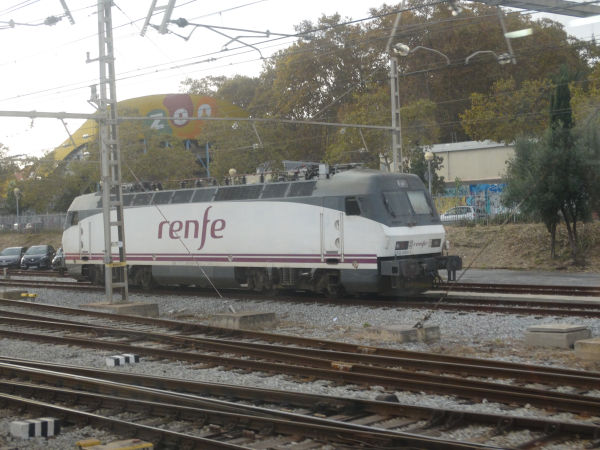
Renfe's locomotive class 252 is a Siemens EuroSprinter. Very similar machines are in use in Portugal and in Greece.
It is a four axle universal locomotive. !5 machines were built for Renfe for use on the standard gauge Madrid to Sevilla line
and another 60 machines for the Iberian broad gauge. This is one of the broad gauge machines. Out of the broad gauge units, 31
were built as dual voltage machines capable of operating under both 3 kV DC as well as 25 kV AC.
Picture from Barcelona Franca station 8.11.2018 by Ilkka Siissalo.
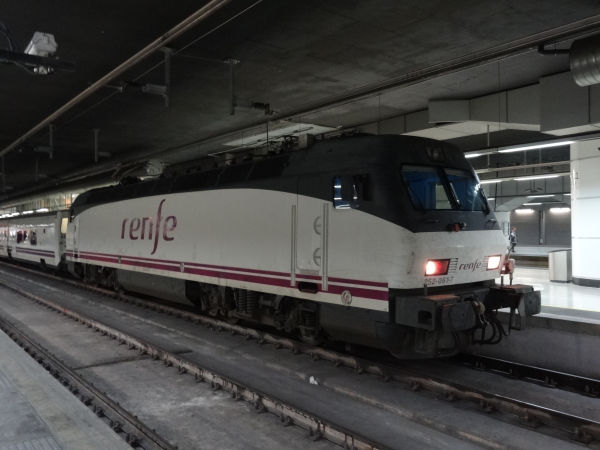
A Siemens EuroSprinter locomotive of Renfe's class 252 in front of a Renfe Altaria Talgo train.
Picture from Barcelona Sants station 11.11.2011 by Ilkka Siissalo.
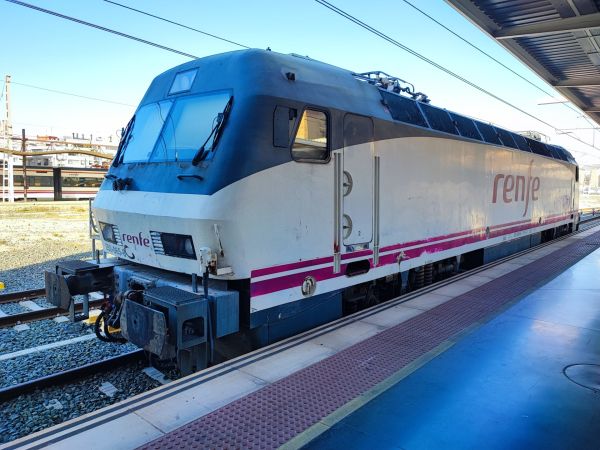
Another class 252 Eurosprinter seen from closer by.
Picture from Alicante 14.6.2024 by Markku Salo.

Three Bombardier TRAXX locomotives of Renfe's cargo part, Renfe Mercancías.
Picture from the rail yards by La Marina del Prat 14.11.2015 by Ilkka Siissalo.
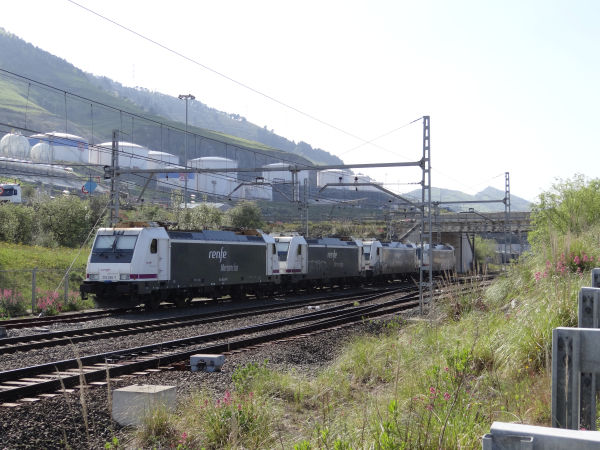
Four Bombardier TRAXX locomotives of Renfe Mercancias' (Renfe cargo division) class 253. These locomotives are otherwise similar
to the TRAXX machines in many other European countries, but these are made for the Iberian broad gauge and for DC operation only.
55 machines were built in Vado Ligure, in Italy at Bombardier's own factory and another 45 were assembled at Renfe's workshop
near Madrid. Note the small airconditioner on top of the cab - that is missing from most other TRAXX locomotives.
Picture from the rail yards by El Calero Auzoa by the harbor of Bilbao 4.5.2013 by Ilkka Siissalo.
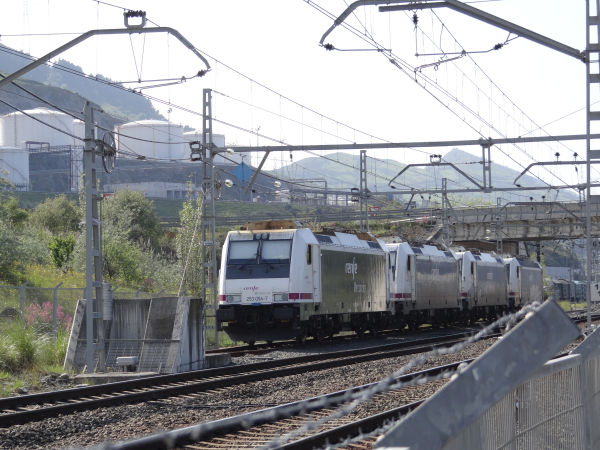
Same four TRAXX machines, seen over a high fence :-)
Picture from the rail yards by El Calero Auzoa by the harbor of Bilbao 4.5.2013 by Ilkka Siissalo.
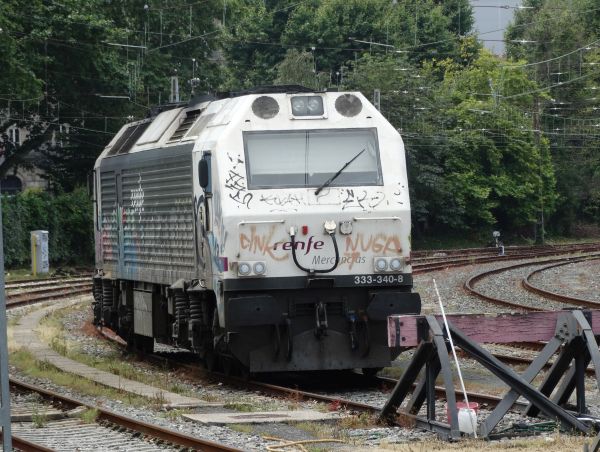
A Renfe class 333.3xx locomotive. The class 333 had originally 93 locomotives, which were delivered by Macosa to Renfe in 1974-76. Some of these
machines got a second life through rebuilds and remotorings, so now there exist several subclasses of class 333. This is the subclass 333.3xx
These are 92 locomotives, built totally new from scratch, but with the use of just the engine and generators from the earlier class 333 machine.
This was a totally new locomotive design with a lot of inputs from Alstom. The same factory is now owned by Stadler of Switzerland and the same
features can still be clarly seen. These machines have a top speed of 120 km/h, are intended just for cargo traffic (unlike the original class 333)
and they have a power rating of 1875 kW.
The subclasses 333.1 and 333.2 outwardly very much resemble Danish/Norwegian Nohab machines of the classes MZ / TMZ since they have the same
ancestors from the General Motors product line.
Picture from Vigo Guixar station 16.6.2023 by Ilkka Siissalo.
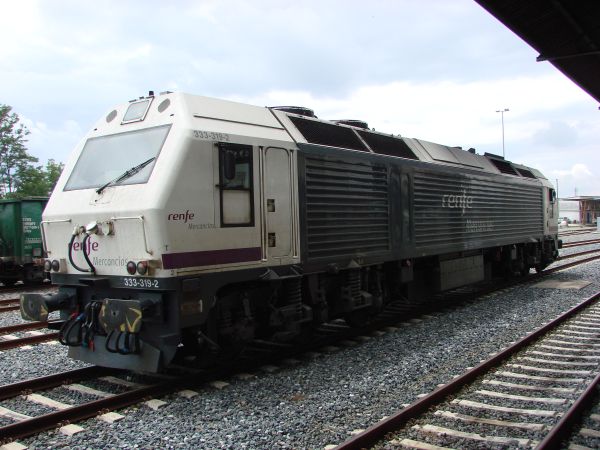
A similar Renfe class 333.3xx when it was a bit newer.
Picture from Santiago de Compostela 24.6.2009 by Ilkka Siissalo.

A closer look at one of the same TRAXX machines as above.
Picture from the rail yards by El Calero Auzoa by the harbor of Bilbao 4.5.2013 by Ilkka Siissalo.
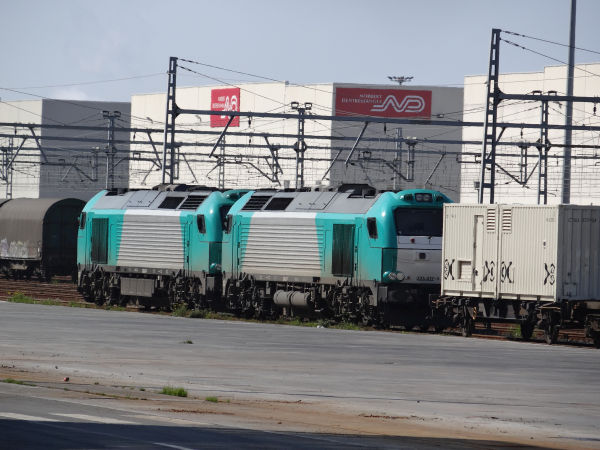
These two large diesel locomotives are so called Euro 4000 machines made by Vossloh in their Spanish factory in Albuixech, present day
Stadler Rail Españja in Albuixech. These machines were built for the locomotive leasing company Alpha Trains for use in Spain and Portugal.
In Spain these Euro 4000 machines are known as the class 335 and in Portugal as class 6000.
Picture from the rail yards by El Calero Auzoa by the harbor of Bilbao 4.5.2013 by Ilkka Siissalo.

A class 311 diesel locomotive of Adif. Adif is the state owned rail infrastructure company which formerly was the infrastructure division
of Spanish state railways Renfe. The class 311 is a lightweight diesel intended for shunting and light cargo trains. The prototype was made
by Babcock & Wilcox, but the series locomotives were built in Spain by Alstom (former Meinfesa), Siemens and Bazani in 1989 to 1991. It has
an MTU type 396 B V TC 13 engine giving it a top speed of 90 km/h. 61 locomotives of this type were built.
Picture from Santander 1.5.2013 by Ilkka Siissalo.
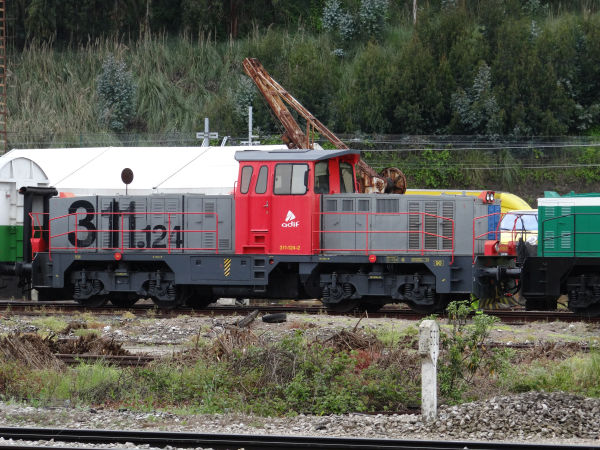
Another Adif class 311 diesel locomotive, similar to the one shown above, but still in the old livery of Renfe. These two machines were
coupled together to pull a very heavy rail maintenance equipment train.
Picture from Santander 1.5.2013 by Ilkka Siissalo.

Another Adif class 311 in Adif's new colours, but slightly smeared with graffiti.
Picture from Vigo Guixar station 16.6.2023 by Ilkka Siissalo.
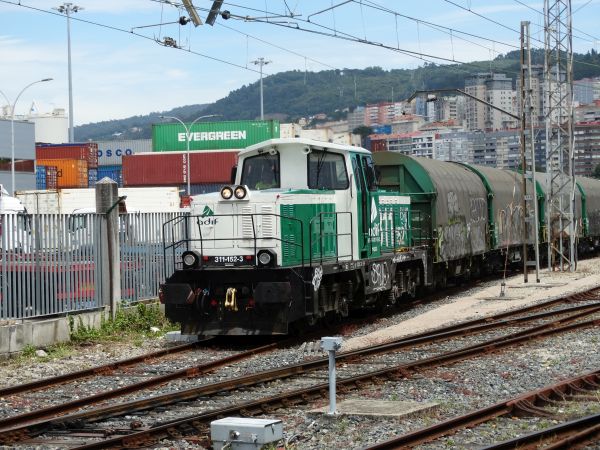
A slightly closer look at the same Adif class 311 as above, but from a different angle.
Picture from Vigo Guixar station 16.6.2023 by Ilkka Siissalo.
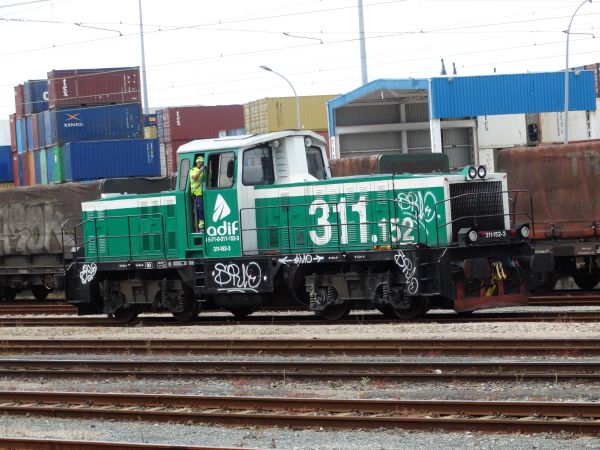
Still the same Adif class 311 as above, now seen from the other side.
Picture from Vigo Guixar station 16.6.2023 by Ilkka Siissalo.
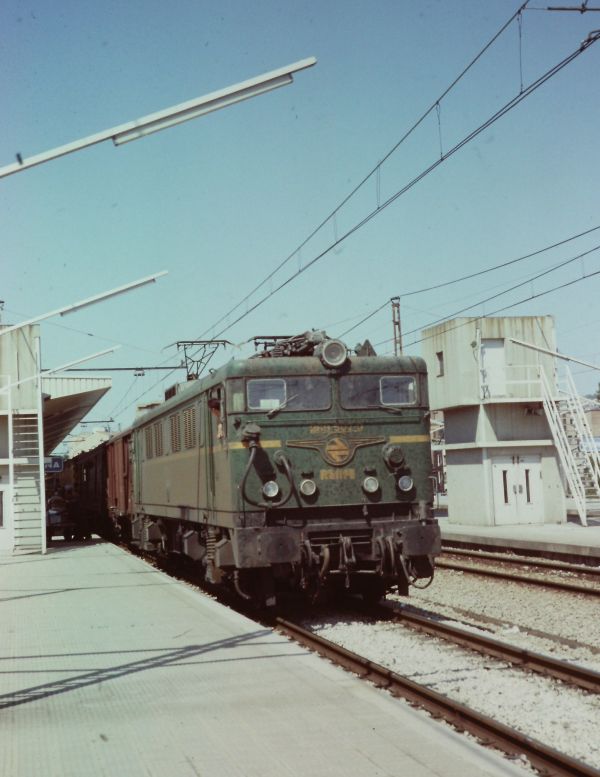
An old locomotive of Renfe's class 269.5 leading a postal train from France into the station of Girona. These machines
were built by a consortium of CAF, Macosa and Mitsubishi Heavy Industries based on earlier Japanese locomotives. The first
ones came to use in 1973 and a total of 265 locomotives were built. Its maximum speed varied from 80 km/h to 200 km/h
depending on which series of these locomotives we are talking about. Its power rating was 3121 kW. This one is of the series
269.5 which was designed for intermodal container trains. Its top speed was 90 km/h in shunting mode and 160 km/h in main
line operations mode. Renfe sold most of these machines in 2010. Some of them ended up in Chile.
Picture from Girona in 1980 by Adrian Gray.

